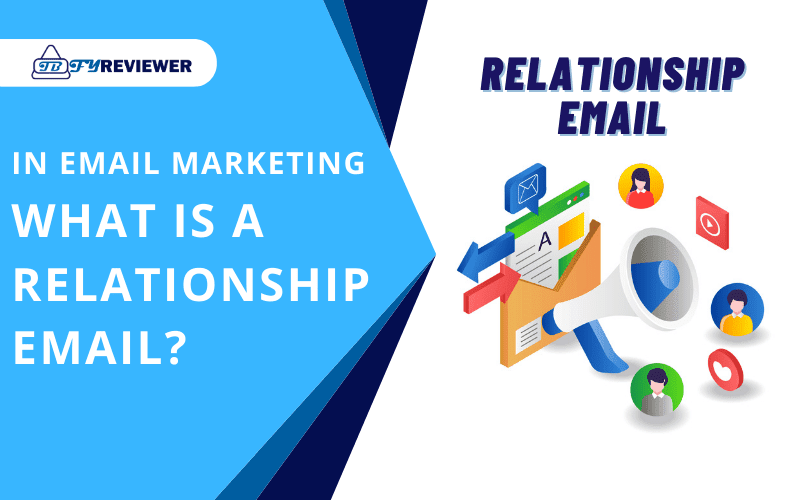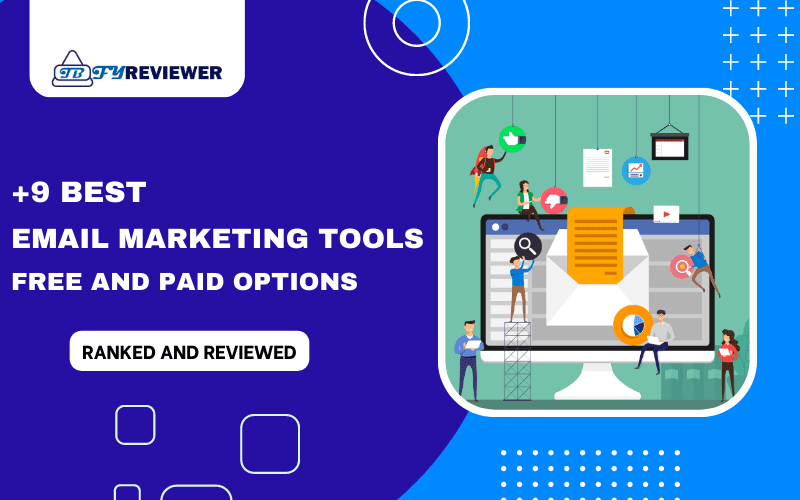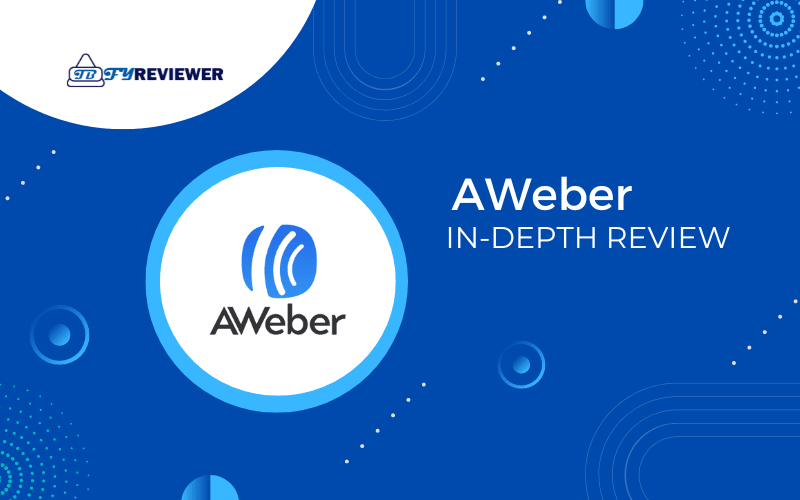Join TbfyReviewer’s newsletter to receive every new article.
In Email Marketing What is a Relationship Email?
Hossam jamjama
- June 7, 2023

In email marketing, what is a relationship email? This is a critical question for businesses seeking to use this marketing strategy to connect with customers and build lasting relationships.
Email marketing has come a long way, and it has emerged as one of the most effective ways for businesses to reach their audience and stay top-of-mind.
However, sending random emails to potential customers is not enough; creating meaningful connections that lead to long-term loyalty should be the goal.
Relationship emails are crucial in achieving this goal, and in this article, we will delve deeper into understanding what they are, why they matter, and provide tips on creating effective ones.
By the end of this article, you’ll have a better understanding of how relationship emails can play a vital role in your email marketing strategy.
Definition of a Relationship Email
A relationship email is any email sent by a business or company with the aim of having a positive impact on their relationship with their subscribers or customers.
This type of email aims to establish trust, loyalty, and engagement by creating a personal connection between the sender and receiver.
Unlike promotional emails that aim to sell products or services, relationship emails are geared towards nurturing leads and building strong customer relationships.
Types of Relationship Emails
There are different types of relationship emails that you can send to your subscribers or customers. These include:
Welcome Emails
Welcome emails are sent immediately after someone signs up for your mailing list. When someone signs up for your company’s email list, it’s important to make them feel welcomed.
A welcome email confirms subscription and sets the stage for future brand communications.
They are an opportunity to make a great first impression, introduce your brand, and set expectations for future communications.
Thank You Emails
Thank you emails are an excellent way to express gratitude to your subscribers or customers for their support.
They can be sent after purchase, newsletter sign-ups, event registrations, or any other action that warrants appreciation.
Birthday/Anniversary Emails
Birthday or anniversary emails are a great way to celebrate milestones with your subscribers or customers. They can help create emotional connections and make your audience feel valued.
Advantages of Using Relationship Emails in Your Marketing Campaign
Relationship emails can have numerous benefits for your business if utilized correctly.
Here are some advantages:
Increased Customer Engagement and Loyalty
When you regularly communicate with your subscribers through relationship-based emails, they feel more connected to your brand.
Relationship emails make subscribers feel appreciated as individuals rather than mere data points in an analytics report.
This sense of individuality encourages them to engage more often with your brand’s content as well as promote customer loyalty.
Better Understanding of Customer Interest
Relationship emails can provide valuable insights into your subscribers’ interests and needs.
By tracking users’ behavioral patterns and clicks, you can identify what interests your customers, their preferences, and their shopping behavior.
You can leverage this information to create more targeted content that resonates with your audience, leading to higher engagement and conversion rates.
Direct Contact with Your Customers
Relationship-based emails provide an excellent opportunity for direct communication with your subscribers.
This enables your business to listen to its audience’s concerns and feedback while gauging if email content is resonating with the intended audience.
By doing so, you can enhance customer experience and build a reputation as a brand that cares about its customers.
Tips for Creating Effective Relationship Emails
Here are some tips that can help you craft more effective relationship-based emails:
Know Your Audience
Successful relationship emailing depends on sending messages suited for your recipient.
To create effective relationship emails, you need to understand your audience’s needs, interests, and pain points.
Use customer data and analytics to segment your mailing list and send personalized content to each group. Segmenting the list and personalizing content will convey that you care enough about them to match their interests.
A Personalized Approach
Use personalization techniques such as adding the recipient’s name or location to make the email feel personal. You can also tailor the content according to the subscriber’s preferences or behavior such as purchase history or web activity.
Tailoring your message to the individual is key in building more intimate connections between individuals across the Internet.
So, don’t be scared to use recipients’ names, landing page preferences or purchase history in building personalized campaigns for them.
Timing and Frequency
One of the crucial aspects of relationship emails is timing.
Sending too many emails or at inopportune times can cause fatigue among subscribers leading to unsubscribes or disengagement.
Consider mailing calendars and time zones while experimenting with different frequency options.
Also, Trigger-based emails like cart abandonment notifications or follow-ups on opened emails are effective when integrated into automated drip campaigns.
Elements of an Effective Relationship Email
Effective relationship emails should have certain elements that capture the recipient’s attention, engage them, and elicit action. These elements include:
Attention-Grabbing Subject Line
The subject line is typically the first thing a recipient sees when they receive an email.
Your subject line should pique the reader’s curiosity enough so that they open without necessarily feeling coerced into doing so.
Use compelling words or phrases that pique their curiosity or evoke emotion while staying true to your brand voice.
Personal Greetings
Personal greetings such as using the recipient’s name add a human touch to the email, making it feel more like a personal conversation rather than marketing communication.
Starting by using the subscriber’s name ensures a first connection between the individual and the list owner.
Engaging Content
The content of the email should be tailored to the recipient’s interests and needs.
Use visuals such as infographics, videos, or images to break up text blocks and make the message more appealing.
Additionally, storytelling techniques can help create emotional connections and inspire action from the reader.
Measuring the Success of Your Email Campaign Using Relationship Emails
These are key metrics for analyzing your email campaign’s effectiveness:
Determining Key Performance Indicators (KPIs)
To measure the success of your relationship email campaign, you need to establish key performance indicators (KPIs) and track relevant metrics.
Knowing what KPIs you aim for in each email campaign will help you analyze its performance based on industry standards.
Metrics to Consider
Some essential KPIs and metrics include:
Open Rates
Open rates indicate the percentage of people who opened your email.
A high open rate means that your subject line was effective, and recipients found your email interesting enough to read further.
Click-Through Rates
Click-through rates reveal how many people clicked on a link or button within your email.
This metric reflects engagement levels and shows which content resonates with your audience.
Conversions
Conversions are crucial for measuring ROI for email marketing campaigns. Conversion rates are the ultimate goal, showing the email’s impact on sales and ROI.
They indicate whether subscribers took the desired action such as completing a purchase, filling out a form, or registering for an event.
In summary, open rates indicate engagement and chances of click-through rates (CTR) that lead to eventual conversions.
Common Mistakes to Avoid When Sending a Relationship Email
There are several mistakes to avoid when sending relationship-based emails. These include:
Overselling Products or Services
Relationship emails should focus on building a connection rather than mainly pushing products or services. Feeling like an impersonal sales pitch is more likely to get ignored.
Overly promotional messages can result in unsubscribes or lower engagement rates.
Poor Design and Presentation
Poor design and presentation can make emails difficult to read or unappealing.
Ensure that emails are visually appealing, easy to navigate, and mobile responsive.
Tailor design techniques to target customers without being overwhelming visually while ensuring imagery and text layout concepts are both intuitive forming an overall pleasing aesthetic.
Ignoring Mobile Optimization
With increasing mobile usage, it’s essential to optimize your relationship emails for mobile devices.
Ignoring mobile optimization for design and content layout may cause subscriber drop-offs on mobile platforms.
Ensure that emails load quickly, are easy to read on small screens, and have clear CTAs.
Keeping Your Relationships Fresh and Relevant Over Time
Relationship emails should evolve with time to keep the connection fresh and relevant.
Here are some tactics to keep your relationship emails updated:
Conduct Opportunities for Feedback
Regularly gathering feedback from your subscribers or customers can provide valuable insights into their needs, likes, and dislikes.
Use this feedback to refine your communication strategy and create more effective relationship-based emails.
Staying Informed About Customers' Changing Needs
Customer needs and interests constantly evolve, requiring brands to stay informed about these changes.
Stay up to date with industry trends, news, and best practices to ensure that your relationship-based emails remain compelling and relevant.
Email marketing tools for Relationship emails
As we discover earlier Email marketing is a powerful way to nurture leads and convert them into customers. Here are some of the best email marketing tools:
Aweber: This is a popular email marketing tool that offers a range of automation features and excellent deliverability rates.
ConvertKit: This is a powerful email marketing tool that’s designed for bloggers and creators.
Mailchimp: This is a well-known email marketing tool that offers a range of features, including automation and segmentation.
Check out our list of the best email marketing tools (both free and paid options) and choose the right tool for your relationship emails.
Conclusion
In email marketing, building a strong and lasting relationship with customers is an essential factor that drives engagement, boosts loyalty, and increases revenue.
Relationship emails serve as a crucial component to accomplish this goal.
Crafting personalized content through targeted frequency and timing, compelling imagery, and concise messaging can help businesses foster connections with their email subscribers.
By measuring the success of key performance indicators (KPIs), such as open rates, click-through rates, and conversion rates, businesses can refine their relationship email strategy accordingly.
In conclusion, relationship emails are crucial in creating meaningful exchanges between businesses and customers in email marketing campaigns.
Consider implementing these tactics to improve your approach to relationship-based emails truly.
- Last Update OnJune 7, 2023
- ByHossam jamjama

Hossam Jamjama
Hey, it’s Hossam. I am a full time digital marketer & an online business owner. I write guides and in-depth reviews of the best SaaS products available. To help businesses make informed decisions about picking the right one for them.
Disclosure: TbfyReviewer is a participant in various affiliate programs, which means we may earn a commission when you buy something through links on our site at no cost to you if you decide to purchase a paid plan. You can read our affiliate disclosure.
Table Of Content
- Definition of a Relationship Email
- Types of Relationship Emails
- Advantages of Using Relationship Emails in Your Marketing Campaign
- Tips for Creating Effective Relationship Emails
- Elements of an Effective Relationship Email
- Measuring the Success of Your Email Campaign Using Relationship Emails
- Common Mistakes to Avoid When Sending a Relationship Email
- Keeping Your Relationships Fresh and Relevant Over Time
- Email marketing tools for Relationship emails
- Conclusion


